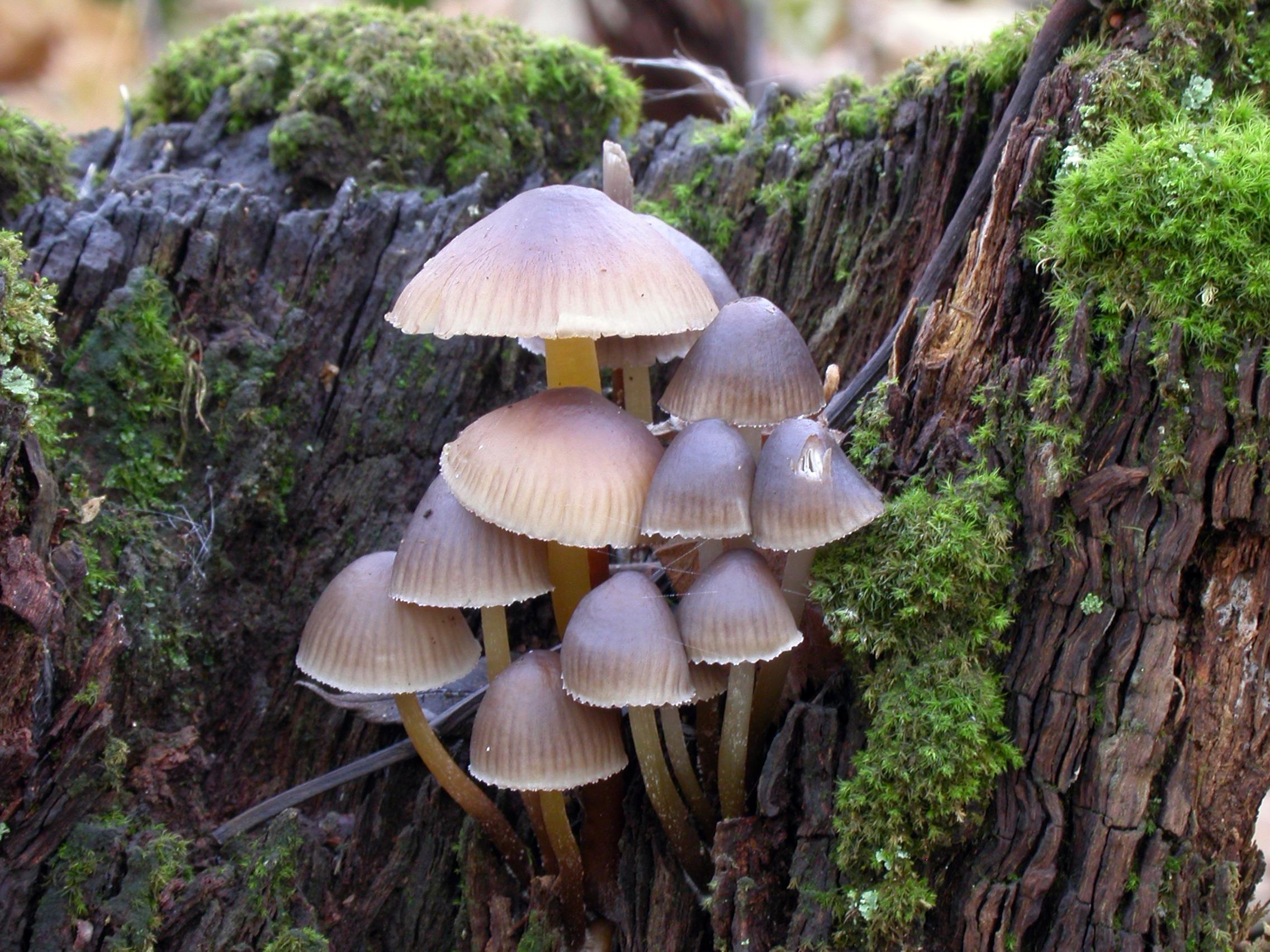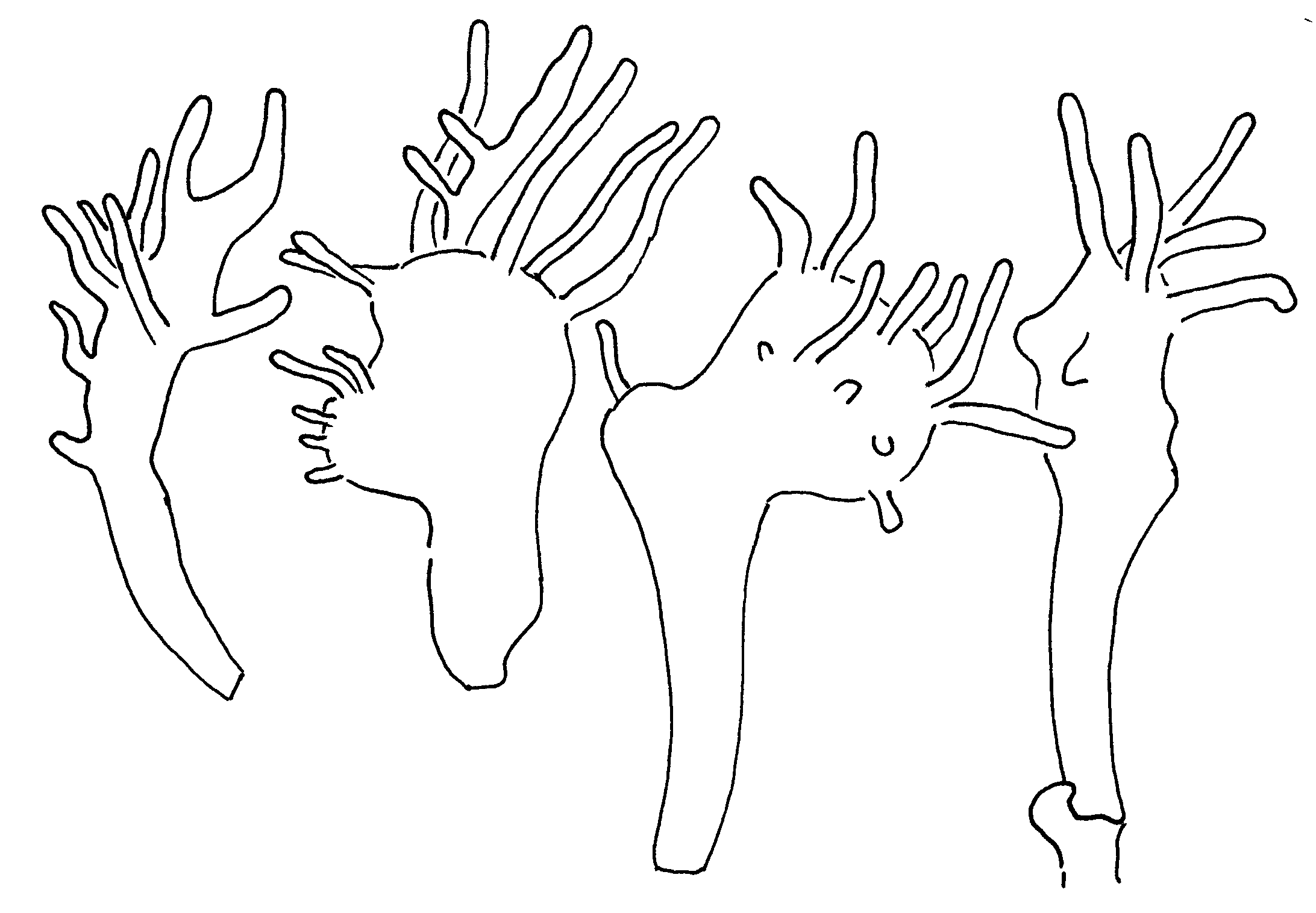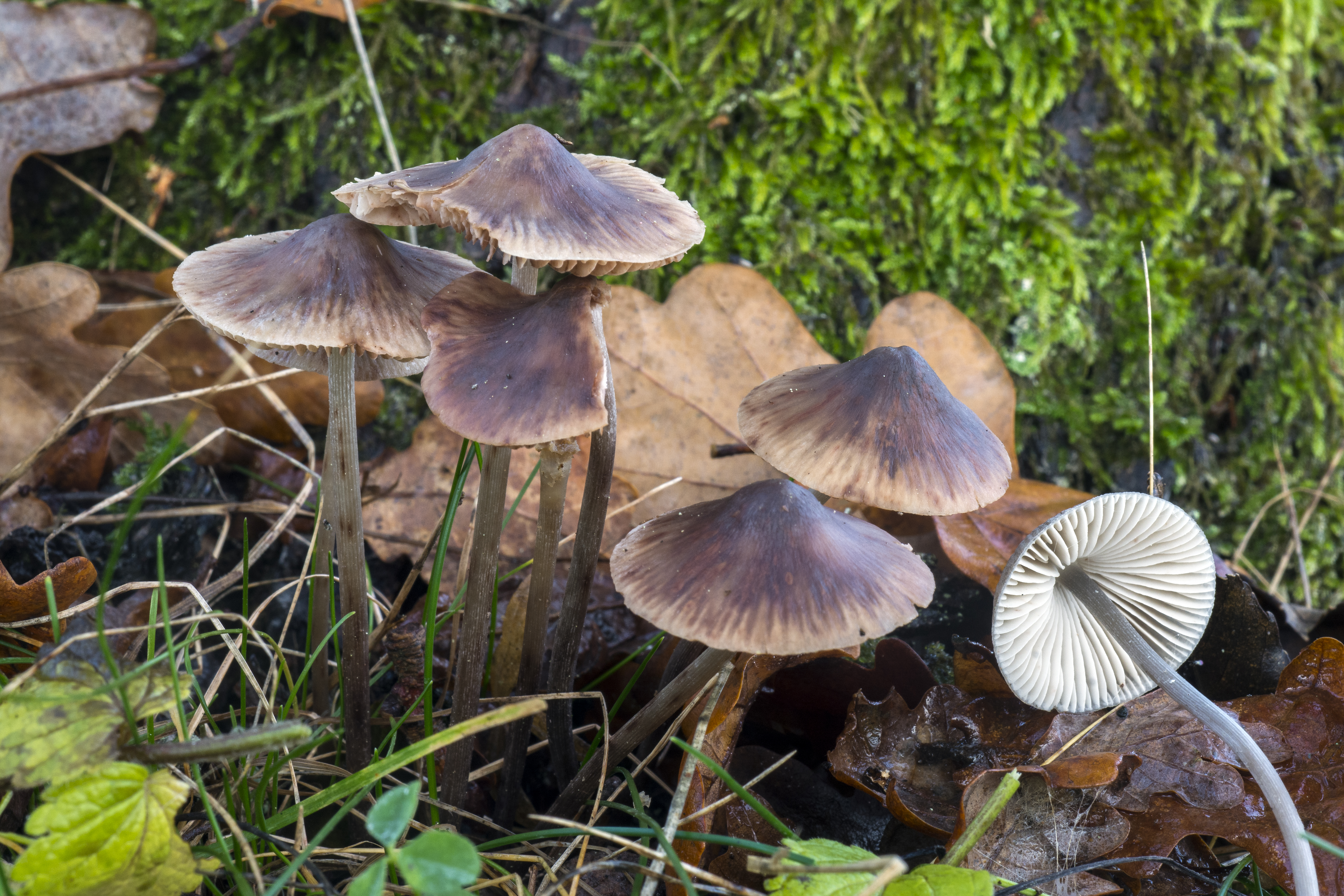Mycena inclinata
Mycena inclinata
Description
Cap 10-40 mm across, parabolical or conical to campanulate, to plano-convex, mostly broadly umbonate, sulcate or rugulose, translucent-striate and viscid when wet, glabrous, margin crenulate, exceeding the gills, whitish with creamy to pale brownish shades or dingy yellowish incarnate, gradually darkening, turning dark date brown to dark sepia brown, or more silvery grey, with the centre often black-brown, paler at the margin. Gills 22-28 reaching the stem, adnexed to adnate, decurrent with a tooth, smooth to veined or rugulose to dorsally intervenose, whitish, then pale sepia or pale grey-brown, often becoming flushed with a pink hue or spotted with vinaceous stains, the edge whitish to concolorous. Stem 30-150 x 1.5-4(-6) mm, firm to tough, equal or somewhat thicker below, terete to somewhat compressed, fibrillose to floccose-fibrillose, sometimes splitting lengthwise, puberulous above, then glabrescent and shiny, silvery white to silvery grey, watery greyish white or yellowish above, turning yellow to dingy ochraceous farther down, fulvous to dark reddish brown below, finally entirely dark brown; base covered with long, coarse, whitish to ochraceous fibrils. Odour spicy-rancid, ± farinaceous when cut. Taste similar, but also said to be acrid. Basidia 24-38 x 6.5-9 µm, clavate, 4-spored. Spores 7-9(-11) x 5-6(-8) µm, Q = 1.2-1.8, Qav ˜ 1.5, broadly pip-shaped, amyloid. Cheilocystidia 19-35 x 6.5-13.5 µm, forming a sterile band, clavate, obpyriform, subcylindrical or irregularly shaped, covered with fairly few, unevenly spaced, coarse, cylindrical, simple to branched excrescences 1-17 x 0.5-2 µm. Pleurocystidia absent. Lamellar trama dextrinoid. Hyphae of the pileipellis 1-4(-7) µm wide, smooth to sparsely diverticulate, excrescences 1-5(-18) x 1-1.5 µm. Hyphae of the cortical layer of the stem 2-3 µm wide, smooth to sparsely diverticulate, excrescences 2-8 x 1-1.5 µm, terminal cells enlarged to 5 µm, variously shaped, coarsely diverticulate. Clamps present in all tissues.
Ecology and distribution
Fasciculate on decaying wood, fallen branches and old stumps of deciduous trees, generally Quercus. Regular in South Norway, but not very common.


